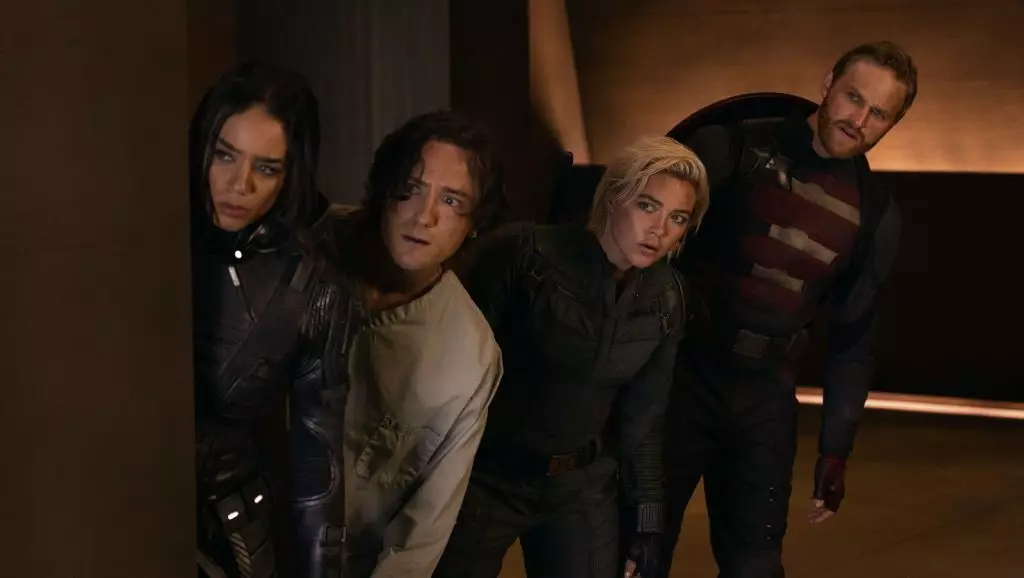The cinematic landscape has changed dramatically over the last decade, with blockbuster franchises commanding the box office like never before. Yet, even titans like Disney and Marvel Studios, which once held a monopoly on superhero narratives, are now grappling with serious challenges. The underwhelming performance of “Thunderbolts,” projected to dwindle to a $30 million take in its second weekend after an initial dropoff of 60%, signals a newfound fatigue among audiences. They’ve journeyed through endlessly similar stories featuring caped heroes, and the thrill seems to be waning. It seems audiences have reached their saturation point; the once-revered genre has morphed into a repetitive cycle, making even the most ardent fans hesitate to buy tickets.
Competing Against Serial Mediocrity
The sad reality for modern moviegoers is the rampant mediocrity cluttering the cinematic marketplace. Films like “Sinners,” despite showing resilience with a cumulative gross nearing $200 million, do little to shake up the formulaic nature of such productions. Viewers may initially flock to the theaters, only to find themselves disappointed by rehashed plots and predictable twists. The industry’s reliance on franchise reboot after franchise reboot dilutes creative endeavors and stifles originality. Instead of taking risks that might lead to groundbreaking storytelling, studios often opt for the safest bet, capitalizing on pre-existing brands rather than fostering new cinematic voices. This pattern can make consumers feel trapped in a world of derivative film experiences.
Effective Marketing vs. Genuine Interest
Consider the upcoming release of “Final Destination: Bloodlines.” Despite not having the same anticipation as earlier installments, its projected revenue of $30M-$40M is nevertheless noteworthy. The alarming aspect becomes evident when one examines whether this interest is driven by genuine anticipation or merely strategic marketing. Clever advertising has a powerful impact on viewers decision-making, often swaying them into theaters even when the content falls short of expectations. In contrast, surprise hits like “Fight or Flight,” blessed with an impressive audience rating and positive critiques, stand as a testament to public craving for originality over rote marketing fluff.
The Problematic Growth of Streaming Services
Another variable that cannot be ignored when discussing the faltering box office numbers is the dramatic rise of streaming services. With an avalanche of content—some of which rivals that of the big screen—streaming platforms have reshaped viewer habits. Audiences now have the luxury of accessing a buffet of films from the comfort of their homes, often choosing to avoid crowded theaters. The narrative of “The Accountant 2,” building a modest yet growing audience without feeling the pressure to conform to traditional box office success metrics, speaks to how digital distribution methods have impacted the appeal of going out to cinemas.
Consumer Fatigue: A Quest for Meaning
Ultimately, movie-going has transitioned from an event to a mere afterthought for many. Audiences have grown weary of reduced stakes and inconsistent quality across action-packed spectacles. In particular, films with rich lore and deep characters often fall victim to studios prioritizing profit margins over narrative depth. The disappointing trajectory of franchises may point to a broader societal trend: a yearning for meaning. People actively seek films that offer more than explosive action scenes; they crave stories that resonate on a personal level. Nothing illustrates this better than the lukewarm reception of releases that hinge on indifferent aesthetics rather than character-driven narratives.
Instead of resting on their laurels, studios need to adopt a forward-thinking mentality that prioritizes artistic integrity. The entertainment industry risks alienating its most loyal followers unless it undertakes a strategic pivot, emphasizing quality over quantity and fostering genuine storytelling. Without such a shift, the trend of box office aversion is likely to solidify, pushing audiences further away from theaters and into the arms of their streaming services where authenticity can sometimes flourish.

